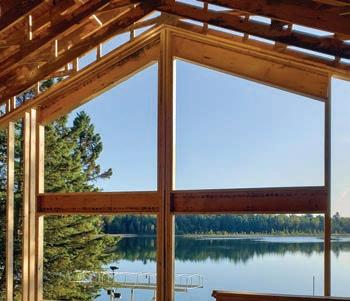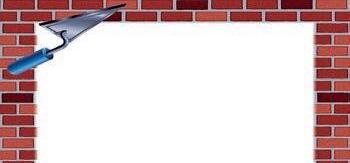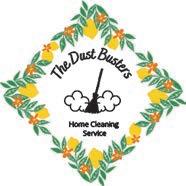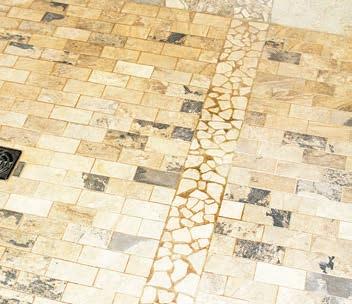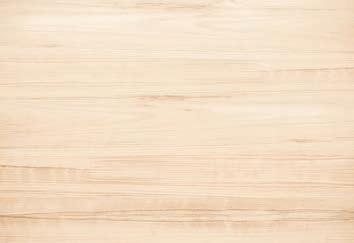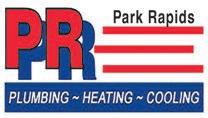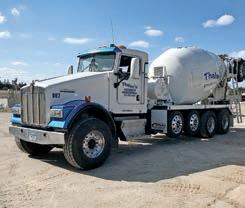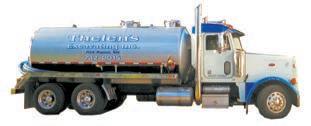














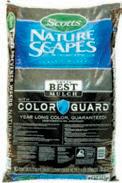





































 MBY SHANNON GEISEN Park Rapids Enterprise
MBY SHANNON GEISEN Park Rapids Enterprise
ichelle and Brandon Crissinger, both 1999 graduates of Park Rapids High School, have created a family haven.
Their nearly six-acre parcel is on the outskirts of Park Rapids, yet it’s nicely wooded and private.
“It’s a great place to raise a family,” Michelle said. “You get deer and bear that walk through the backyard.”
Originally built around 2000, the Crissingers bought the home from friends in Aug. 2018.
They have been slowly and steadily updating it when time and finances allow.
“Just a little bit at a time,” Michelle said. Their recent remodel entailed their kitchen and combined laundry-mudroom.
“It’s perfect. I love it,” Michelle said.
The couple has three sons: Tyler, 15, Brayden, 14, and Ryker, 9.
“We want our house to be the place where all their friends come,” Michelle explained.
She is a nurse practitioner. She works at Essentia Health in Detroit Lakes, but previously worked at CHI St. Joseph’s Health for 18 years.
Brandon is vice president and chief operations officer at ProWest Associates in Walker.
Today, their new kitchen is spacious and bright.
Michelle said she always admired how her friend made delicious, home-cooked, threecourse meals from scratch, assuming it was due, in part, to a stellar kitchen.
When the Crissingers moved into the home, Michelle recalled realizing “no, it wasn’t the kitchen. It was totally her. She was working with limited space, for sure.”
Armed with her Pinterest board, Michelle layed out each element of the updated design.
“I told them I wanted the biggest bar I could have, the biggest island I could have,” she said.
She didn’t want any sinks or ovens within the island. “That way you can do school kids’ projects. You can use it as a buffet. You can make a million cookies – I do like to make cookies,” Michelle explained.

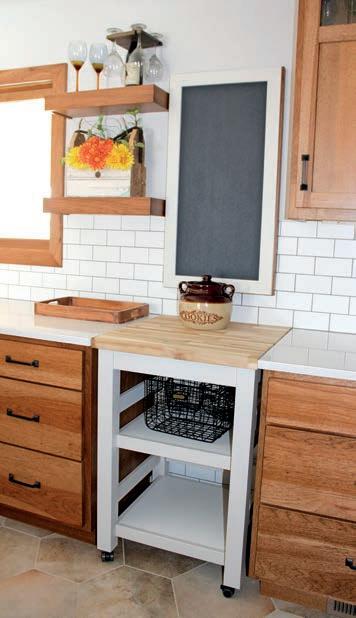

From Page 5
An adult beverage cooler is housed in one corner of the island. The other end features glass cabinets, perfect for storing cookbooks, special glassware and other knick knacks.
Hickory cabinets throughout the kitchen offer plentiful storage space. They were purchased from Eischens Wood Products Inc.
“It’s not rustic, though. I didn’t want the knots in it,” Michelle said, adding the stain is one of Jerry Eischen’s concoctions.
All of the cabinets have the soft-close feature. “I have three kids and BANG, BANG, BANG!”
She opted for deep drawers that roll out, like one set under the gas oven that separately houses pots or pans, then lids in another.
There are specialized cabinets for baking sheets and cutting boards.
The towel rack is aptly tucked beneath the countertop –another Pinterest idea.
Her KitchenAid mixer has its own cabinet with a shelf that can be lifted and locked into place.
Worried that the two-tone kitchen cabinet look would eventually fall out of favor, Michelle skipped that trend.
“I love white, but everyone said, ‘Don’t get white because it’ll eventually chip and it’ll get really dirty. It’s hard to hide the dirt,’” she added.
The Crissingers chose a gas stove over electric.
“This house has natural gas, so I love cooking on gas, not that I’m a fantastic cook, by any means,” she said. “My husband likes electric better, but I think it’s what you grew up with.”
CRISSINGERS: Page 8



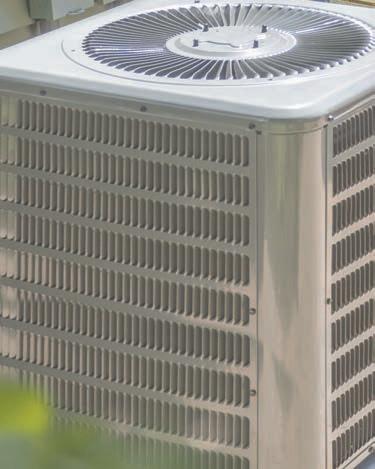
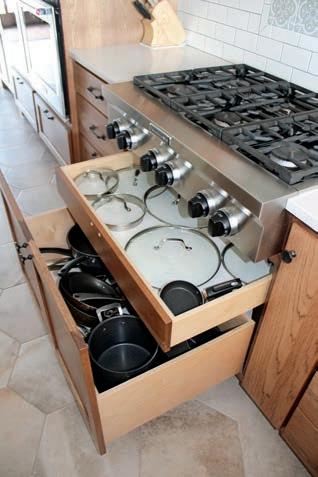
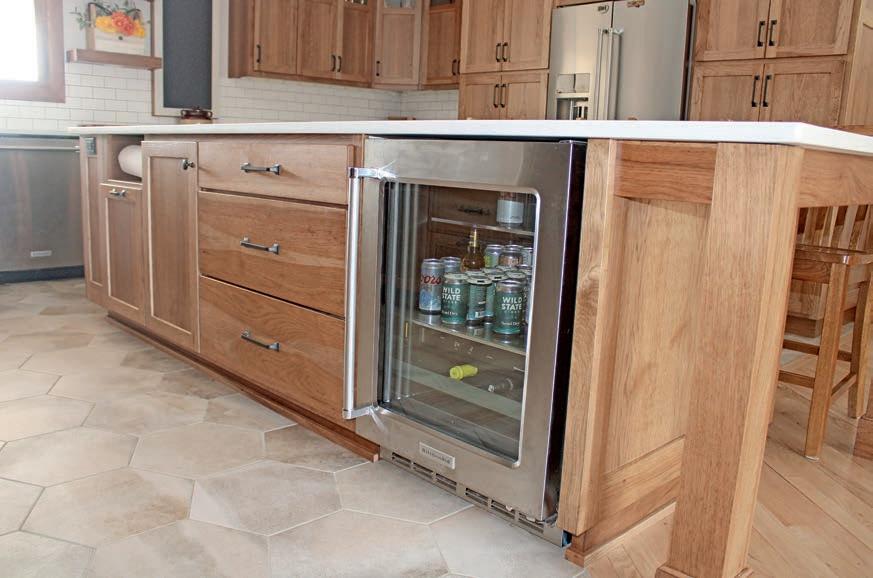
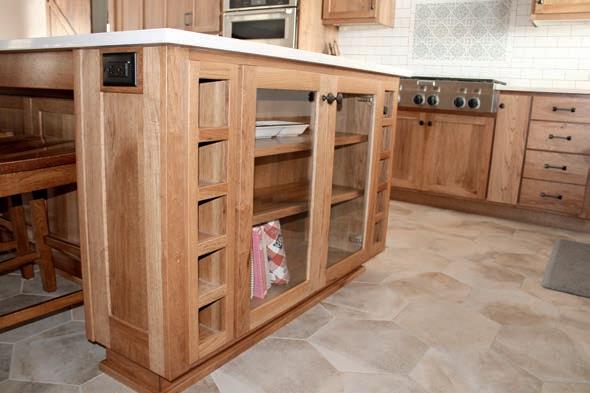
From Page 6
She worked with Becker’s Building & Design to place decorative tile above the stove, showing them her Pinterest inspiration.
Chase Flooring helped Michelle find the hexagonal floor tile that she liked. They also installed the backsplash.
Creating a Pinterest board made it easy to work with contractors, she said. “I’m not an interior decorator. I just know what I like, and then I find pictures of it and I can show them.”
By expanding the kitchen area, the Crissingers were able to equip it with a regular oven and a convection ovenmicrowave combo.
“We were just creative and I think
it turned out fine,” Michelle said.
Nathan Sitz of Park Rapids Hardwood Flooring assisted the Crissingers with blending the new kitchen tile with existing hardwood flooring. The angles made the job especially challenging and all of the contractors worked well together, Michelle recounted.

pantry to the office.
The couple did the demolition themselves, but utilized local contractors for the rest.
Delayed by the COVID-19 pandemic, Brandon said they first began by tearing apart the garage entrance and neighboring office space. A washer and dryer were relocated from the old
Now, the freshly painted and remodeled laundry/mudroom can be entered through a new garage door or via a barn-style, sliding door from the dining area.
The Crissingers installed new, white cabinets in the laundry, with plenty of
CRISSINGERS: Page 10
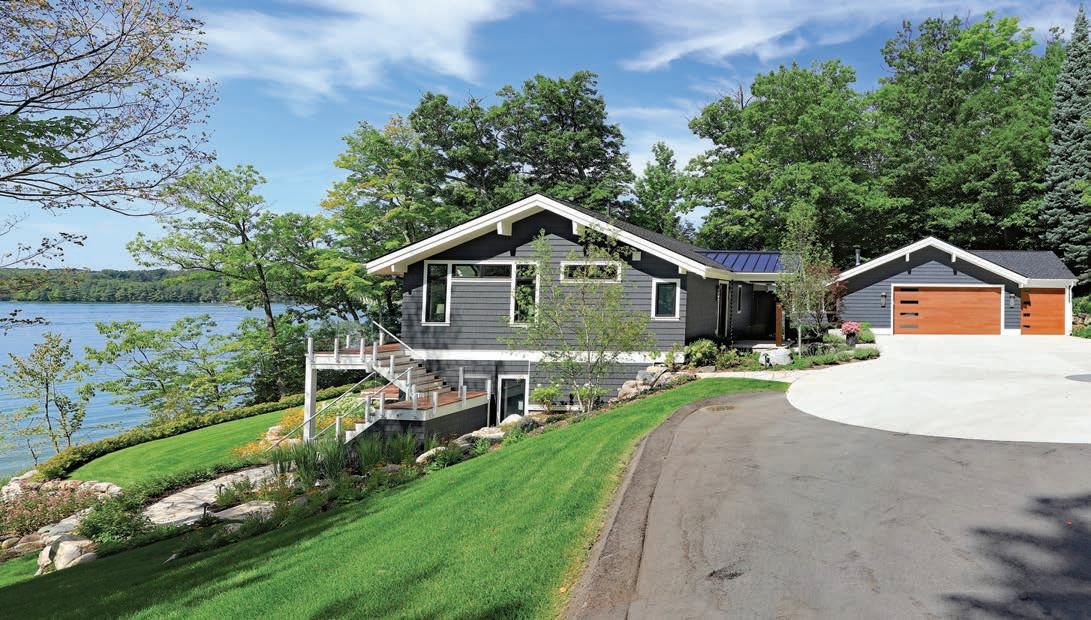









From Page 8
shelving, drawers, hooks and nooks for coats, shoes and other outdoors gear.
In Feb. 2021, they started ripping apart the old kitchen, removing old flooring, etc.
The Crissingers tore out the wall that formed the small pantry. They removed a door that accessed the garage from the kitchen.
“We did all the demo ourselves, and when I say ‘we’ I mean mostly him,” Michelle said.
The old kitchen cabinets
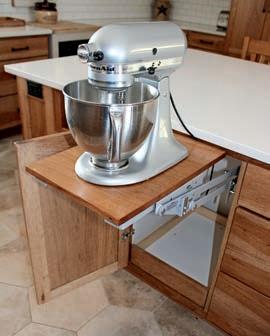
were repurposed. “A friend of ours took them and they put them in their cabin,” Michelle said. “They even reused all the countertops, the sink and all the appliances.”
The remodel was finished by June 2021.
“It was a long haul,” Michelle said.
Next up: Michelle wants to continue the alder trim throughout the home, replace an old window, install a matching built-in fireplace in the living room and redo a bathroom.
“All in good time,” she said. Shannon Geisen can be reached at sgeisen@parkrapidsenterprise.com.
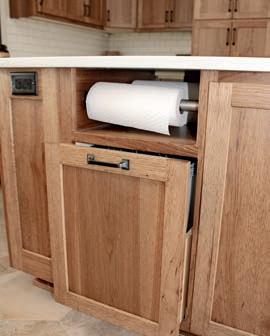
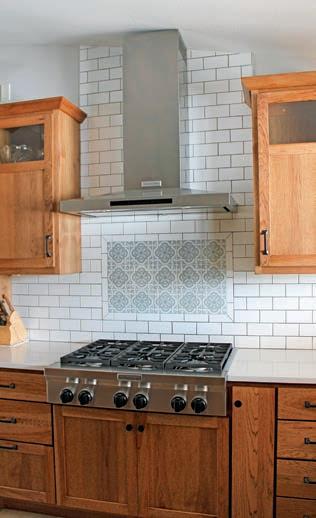
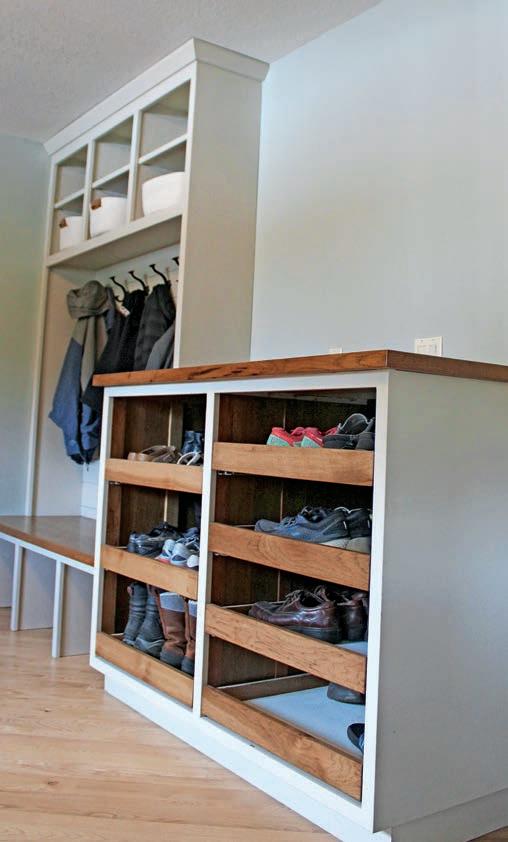



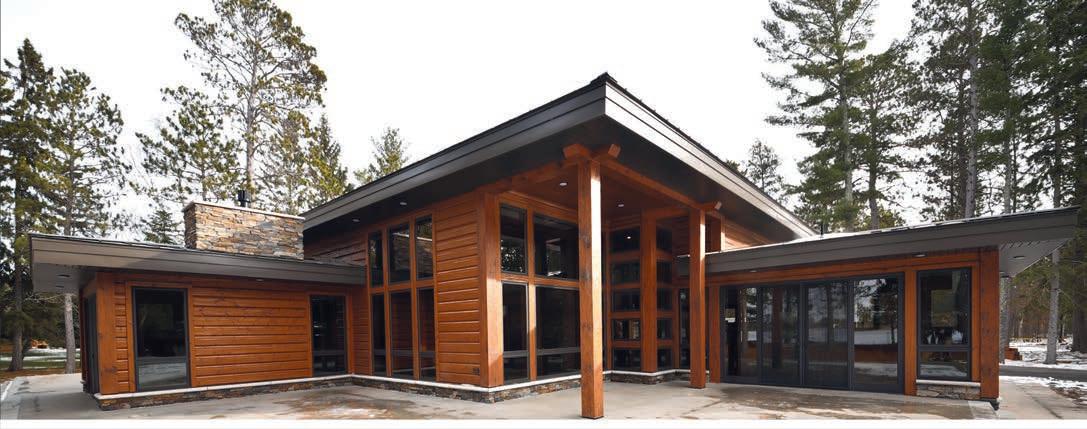

If your home has limited gardening space, consider putting annual flowers in a window box.
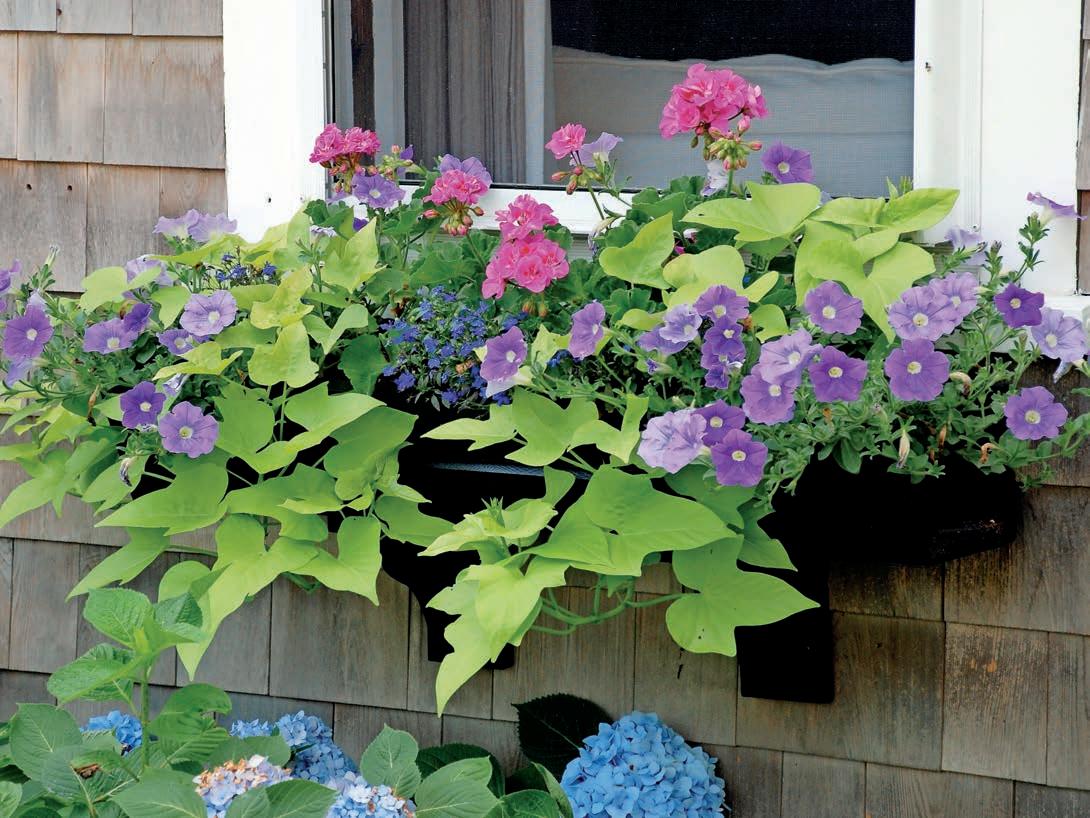
Do you have big gardening ideas, but a small space to garden?
I’ll go over a few small space gardening techniques, including ways to maximize space in small gardens, and management techniques to keep potential problems under control.
Choose your plants wisely
When growing in a small space, it’s hard to fight the temptation to plant too many things.
Plants that are too close together end up competing for nutrients and light, and a dense plant canopy can lead to more disease pressure, so fewer plants that are properly spaced will actually provide you a better yield than squeezing many plants in the same space.

With that in mind, I typically avoid planting things like pumpkins and winter squash in my garden at home. These crops take up a lot of space, and are easy to find at farmers markets later in the summer. Instead, I stick to smaller plants so I can grow a wider diversity of things.
For small containers, like window boxes, herbs, annual flowers and leaf lettuce are great choices. These plants grow quickly, and you can usually get many harvests throughout the summer. An extra bonus to growing herbs is that you can dry them and enjoy them throughout the year.
When looking for plants that will grow well in containers, look for terms like “compact,” “tidy plant habit” or “short stature.
For some common vegetables, you’ll need to decide between determinate and indeterminate varieties. A determinate variety will grow to a certain size and then flower and produce fruit all at once. Determinate varieties are typically preferred for growing in pots, as they require less maintenance and remain compact. An indeterminate variety will continue to grow, flower, and produce fruit throughout the summer.
Indeterminate varieties typically require staking and pruning, whereas determinate varieties maintain a bushlike shape.
If you have plenty of vertical space and trellising materials, an indeterminate variety can be a nice way to use that vertical space, allowing for other things like herbs in the understory.
GARDENS: Page 14

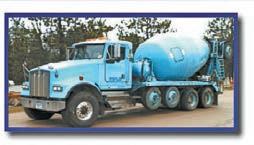


POBox311|
POBox250
POBox311|
www.communityfirstbankmn.com
POBox250

www.communityfirstbankmn.com



If you have multiple raised beds, keep your major plant families together in the same bed so that you can rotate them all to a new bed the following year.
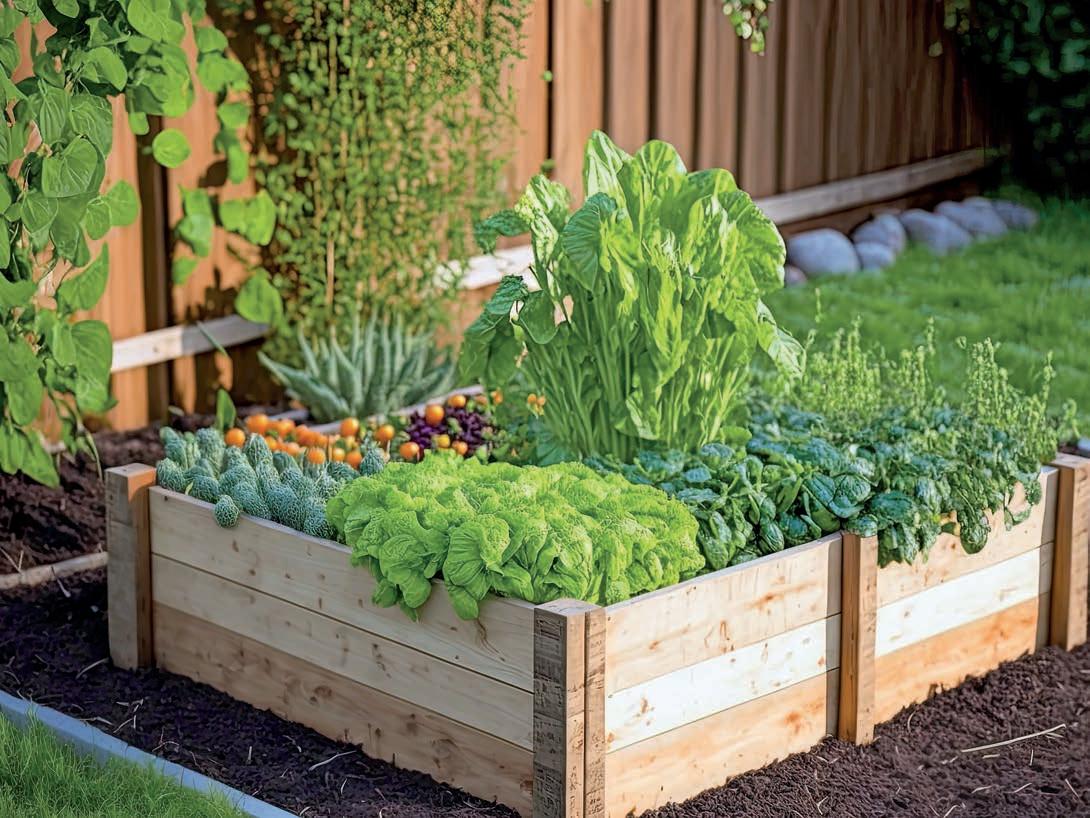
From Page 12
Containers are a great way to add plants to a small space, especially to sidewalk or balcony areas.
They are also a good choice for renters whose landlords will not allow for a garden in the ground.
Herbs are a great choice for small spaces because they don’t take up much space and do well in containers.
Remember to fertilize regularly. All-purpose fertilizers have nitrogen, potassium and phosphorus, nutrients plants need in large amounts as well as other essential plant nutrients like iron, manganese and zinc.
Maintaining even moisture is challenging for container plants. Depending upon the size and material of the container, you may need to water more than once per day during hot, dry weather. At a minimum, you’ll usually need to water at least daily. Avoid letting your containers dry out for too long. Plants can become quite stressed from
prolonged periods without water.
Finally, if you use trays to catch water (and nutrients) under your plants, be sure that the retained water does not cause prolonged periods of waterlogged soil. Most container plants prefer moist – not soggy – soil.
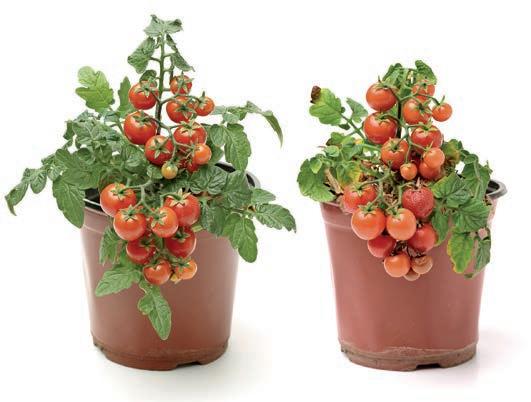
Containers are a great way to add plants to a small space, especially to sidewalk or balcony areas.
of lettuce throughout the spring.
Succession planting is a key concept for small-space growers.
If your goal is to have fresh produce all season long, space out your plantings by a couple of weeks rather than planting all at once.
Succession planting works especially well for short season vegetables like lettuce, radishes and peas.
If you’re starting seeds soon, consider planting a few lettuce seeds this week, a few more two weeks from now, and a few more after that to provide a steady stream
In annual gardens, crop rotation provides numerous benefits.
Primarily, rotating between families helps to reduce disease pressure. Additionally, different plants use different proportions of nutrients and have varying root structures, so rotating the spots where you grow your vegetables can benefit the soil.
GARDENS: Page 15
From Page 14
A few ways to rotate in a small space include building distinct raised beds to delineate spaces, growing in pots and coordinating with your neighbors.
For example, one neighbor could grow tomatoes this year and another could grow cucumbers. Next year, you can switch up who grows what, and everyone shares their harvests so you all get a bit of everything.
If you have multiple raised beds, keep your major plant families together in the same bed so that you can rotate them all to a new bed the following year. You can still interplant flowers and herbs into the beds, but try to keep the major families together. Examples of major vegetable families include the following:
► Solanaceous plants: tomatoes, peppers, potatoes, eggplant
► Cucurbits: cucumber, melons, squash, pumpkins
► Brassicas: broccoli, cauliflower, kale, pak choi, mizzuna, arugula, cabbage
► Apiaceae family: carrots, parsnips, cilantro, dill, fennel, parsley
► Allums: garlic, onions, chives, leeks

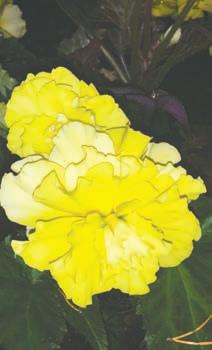
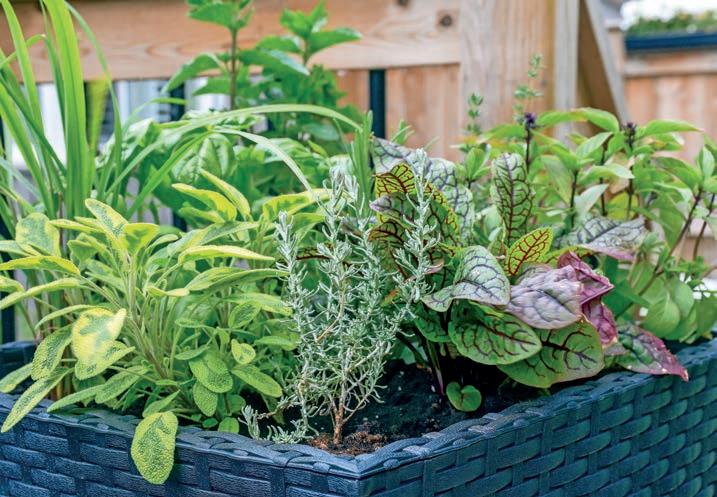
► Amaranths: spinach, chard, beets, amaranth
If possible, maintain a three- to four-year rotation. If you plant tomatoes in a bed this year, try to avoid planting other solanaceous plants in that bed for about three years. This can be hard to do in a small garden, so just do your best.



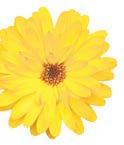
A variety of herbs are easily grown in a container.
Tarah Young is the Hubbard County University of Minnesota Extension educator in agriculture, food and natural resources. If you have any questions about this topic or any others, contact her at 732-3391. If information about agriculture, gardening and natural resources interests you, consider signing up for the Hubbard County UMN Extension Agriculture, Gardening and Natural Resources E-newsletter at z.umn.edu/HCExtensionNewsletter.








Contributed / Hubbard County SWCD
This rain garden, which the Hubbard County Soil and Water Conservation District planted in 2021 in Park Rapids, helped reduce rainwater runoff from the property onto 8th Street. Species featured in the garden include clover, self-heal, creeping thyme, ground plum and black-eyed Susan.

The ideal of a manicured grass lawn may not be all it’s cracked up to be.
With four major biomes meeting in the Mississippi Headwaters region, it should be no surprise when homeowners and gardeners have trouble getting any one type of lawn to grow where they want it.
Maybe part of the yard floods a lot and stays wet. Maybe there’s a sandy spot where plantings fail to thrive. There are areas that get too much sun
or shade, or where the pine needles smother anything you try to grow.
Don’t give up hope. There may be a solution – if you’re open to something a bit different.
Two Hubbard County Soil and Water Conservation District (SWCD) staffers – community conservationist Claire Hansen and water quality resources technician Jake Shaughnessy – shared some options that might grow better in parts of your yard, require less maintenance and help the ecosystem.
“There are some cool alternatives that are both beautiful and beneficial for specific areas in your lawn,” said Hansen.
For some examples visitors can explore, Hansen and Shaughnessy worked with local students to plant a pollinator garden in the community green space south of Century School, and they created a demonstration garden on 8th Street.
Shaughnessy described the latter as a habitat-based planting, or a pollinator rain garden, which provides food and habitat for bees, birds and butterflies while also filtering rainwater that would run into a nearby storm sewer.
LAWNS: Page 18

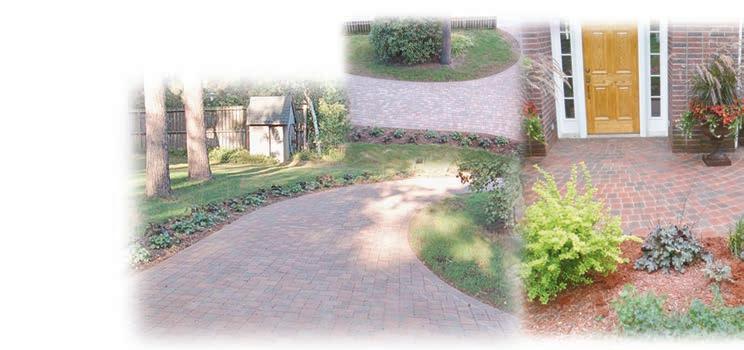








Contributed / Hubbard County SWCD Using signage alongside their garden plantings, the Hubbard County Soil and Water Conservation District seeks to educate passersby and provide links to further resources.
From Page 16
“We’ve seen a fair bit of the community interested,” he said, adding that there have been many requests for pollinator garden starter kits. “It was pretty easy. I think (the seed kits) started with a 25-square-foot size. You could bump it up from there.
“The goal was for people to dip their toe in, so they don’t have to convert their whole lawn. It could be a planter box. It could be a small area near the house that they just wanted to convert to some wildflowers.”
Compared to full-lawn conversions, like bee lawns – which turn a whole yard into a pollinator habitat –Shaughnessy said the SWCD’s hope with the smaller kits was to reach as many people as possible with what he calls “pocket prairies.”
Right now, there’s “a lot of push for bee lawns,” said Hansen. “There’s a lot of seeding mixes available, through places like Minnesota Native Landscapes or Prairie Moon Nursery, for low-grow, low-mow lawns that have good additions for pollinators, like clovers and heal-alls and creeping thyme.”
Shaughnessy looks out for homeowners who have runoff issues
connected with roofs, gutters and roads, helping them create catchment areas to slow runoff through their properties.
“If you have areas where you see high runoff, it’s a perfect spot for a rain garden, something to help filter that water before it gets into a nearby water body,” said Hansen.
“For a few folks, after a rainstorm, they have part of their yard that stays flooded for a day or so,” said Shaughnessy. “There’s ways to use a couple small, strategic rain gardens where it can infiltrate and get into the ground, so they don’t run into those issues with a spot on your lawn where it’s always dead or nothing wants to grow, or it’s always flooded out. You can actually catch the water coming off your roof or your driveway before it gets there and sits.”
According to Hansen, what kind of plants will work for your yard will depend on your soil type and whether the area tends to flood or dries out fast.
“We put in a wide variety of plants where we try to cater to that detention area, where the water is focused, versus the outskirts of the rain garden,” she said. “In the center, if you have a really wet area, (you want) things like irises. On the outside, you can see a transition all the way to
black-eyed Susans or things like that.” Low-maintenance natives
Hansen voiced a preference for native species. “Those plants grow in the area without our assistance for a reason,” she said. “They’re going to require a lot less attention.”
Shaughnessy stressed the importance of choosing varieties that can survive both floods and dry spells. Rain gardens’ soils are designed to drain, he said, so they tend to be pretty dry. Therefore, the plants at the bottom need to be resilient to both extremes.
Hansen also made a case for permaculture, or perennial plants. For example, the SWCD offers wild berry kits, which she said are great for starting with a small space and adding on little by little.
“A lot of our native berries are great because they are low maintenance,” she said. “You can start with a small area. They spread, like elderberry. You can take cuttings and propagate them as you go. The flowers are great for pollinators, and the berries are great for wildlife and for people.”
Another mix the SWCD carries is septic mound mix, which Hansen says is nice for a sandy septic mound where your lawn doesn’t produce much.
LAWNS: Page 20





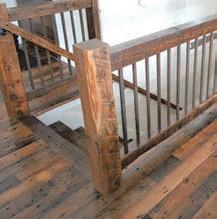


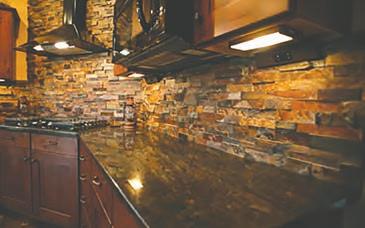



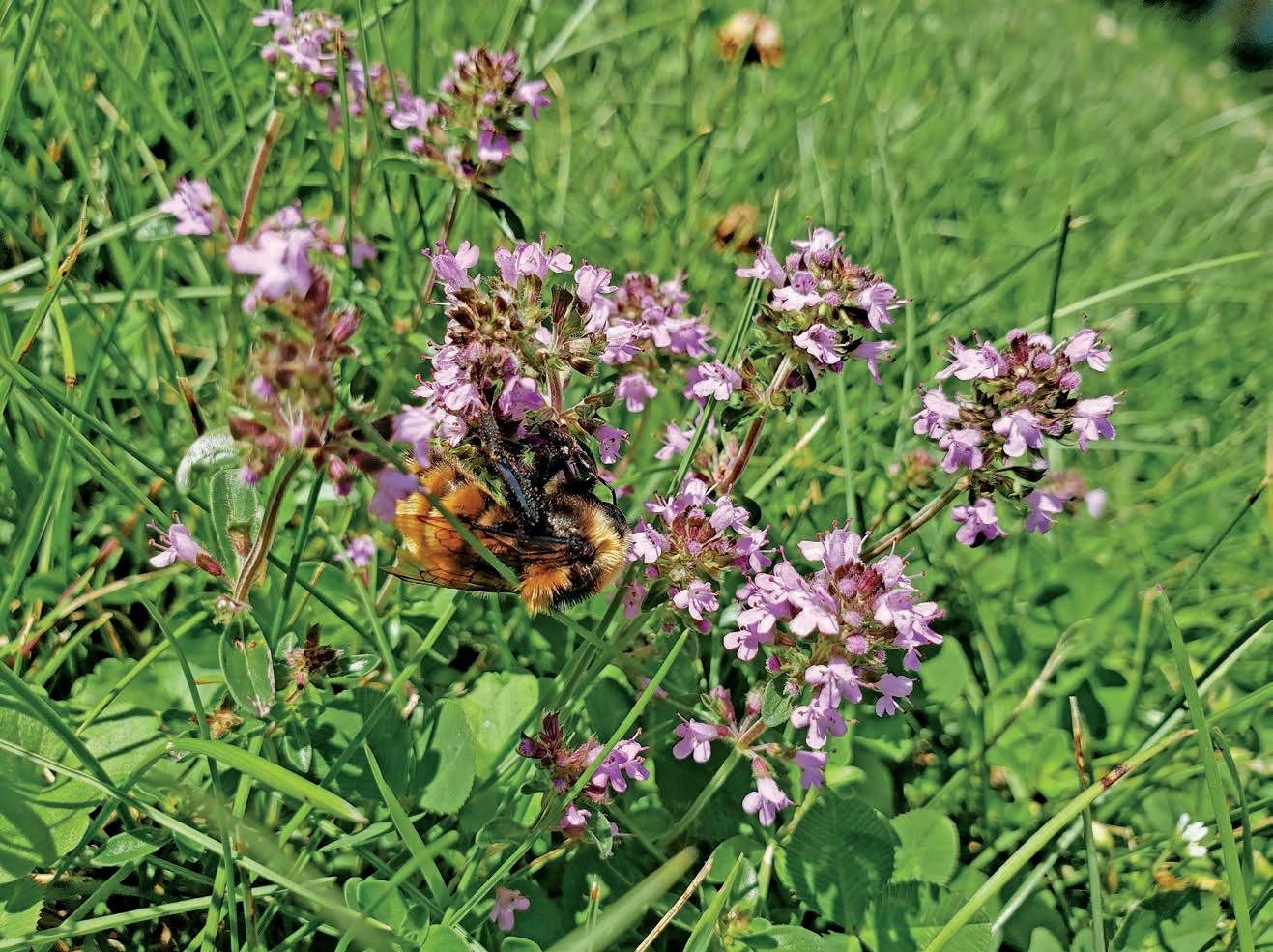
From Page 18
“A lot of times, it’s intentionally super-sandy soil. They make mixes for areas just like that, little prairie mixes.”
Shaughnessy also discussed options that aren’t necessarily native to the local area, but are native to the U.S. – mixes of fescues, grasses and sedges, such as an Eco-Lawn.
He said these grasses “grow a bit and then lay down. They’re a little bit longer and they keep that good root mass, so they do a lot better at holding the soil, and they keep the soil nice and broken up so (water) infiltrates better. It doesn’t dry out in the
late summer” – compared to densely packed soil that can turn hard, so that rain bounces off it.
Hansen said these slowgrowing mixes don’t require fertilizer and are relatively resistant to chemical use.
“They are really shadetolerant as well,” Shaughnessy added. “A lot of folks only end up mowing, maybe, once or twice a year, and depending on if it’s real shady, it could be zero times a year. And it keeps that infiltration a little bit better, because when you cut it, it’s not spending its whole time trying to grow back up. It would lay down and put roots down.”
This type of blend even grows well under pine trees, said Shaughnessy, where most
LAWNS: Page 22

Robin Fish / Enterprise Jake Shaughnessy, water quality resources technician, and Claire Hansen, community conservationist with the Hubbard County Soil and Water Conservation District, are prepared with advice and even seed kits for homeowners looking for lawn and garden alternatives beneficial to soil and water quality, pollinators and wildlife.








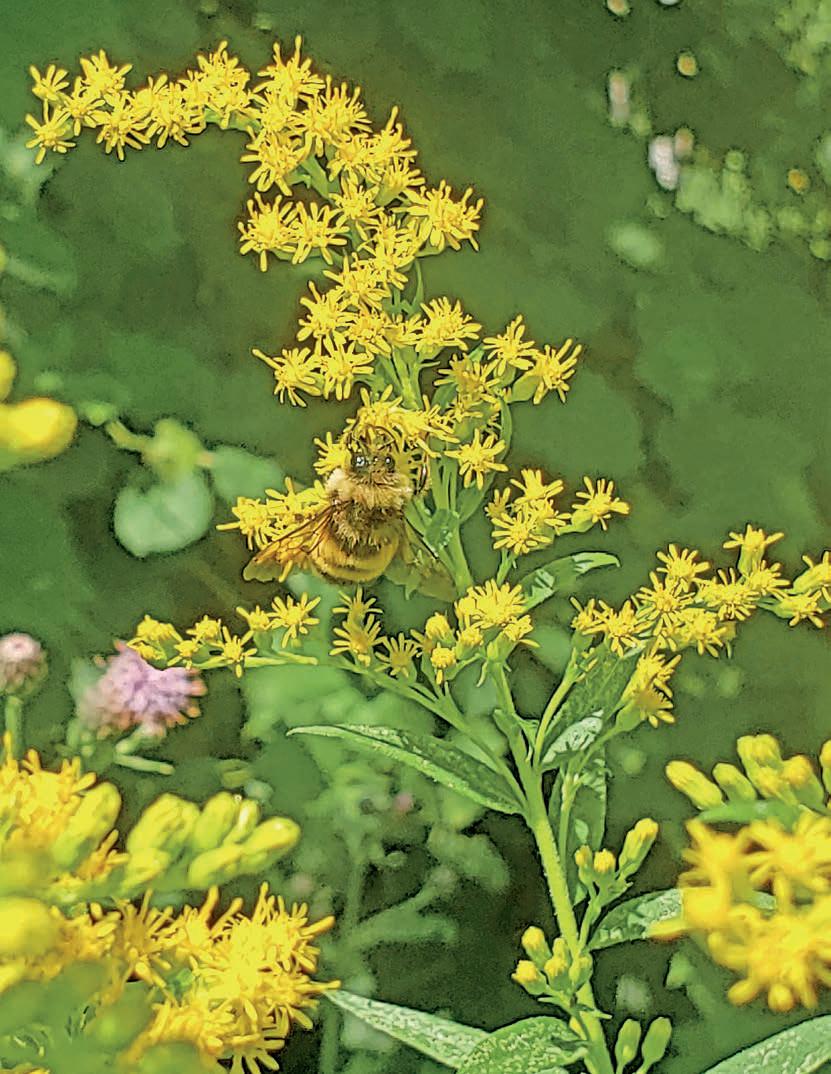
From Page 20
plants tend to be choked out by the shade and the thick carpet of needles. “Obviously, you have to rake the pine needles away,” he said. “But if you do that, these (blends) can work fairly well.”
On the other hand, Hansen said, “We’re big advocates of leaving your leaves if you can, leaving those for pollinator habitats. If you can rake them to the side and leave them over the winter, we have a lot of moths and butterflies and pollinators that like that leaf litter.”
Shaughnessy also touts bluestem

Shaughnessy said some milkweed species thrive in dry areas and others in the wet, but they all benefit the monarch butterfly and the honeybee.
“It’s not just one-size-fits-all,” he said. “The swamp milkweed can do fairly well in rain gardens, because they grow around the edges of wetlands. They’re used to the fluctuation of water going up and down, and they’re shade tolerant.”
grasses as an ornamental border around the edges of a garden or to fill in unused plots. He suggests letting them grow to full height.
“They’re pretty drought tolerant,” he said. “They put deep roots down, so even if it’s a dry year, they can suck water.”
He said bluestem roots can go as deep as 15 feet. “They do a really good job if you have an area where you’re seeing a lot of water come through, and erosion,” he said, adding that their ability to hold soil in place makes them great for steep slopes and shorelines.
Other plants whose root system does a lot of work holding soil together, he said, include the pretty black-eyed Susan. Meanwhile, Hansen name-dropped monarda (a.k.a. bee balm), coneflowers and milkweeds.
For common rain garden species, they also suggested big bluestem, reed or fowl manna grass, fox sedge, awl-fruited sedge, Joe Pye weed, blazing meadow star, northern blue flag iris, black-eyed Susan, various native coneflowers and golden Alexanders.
As for common upland pollinator plantings, they mentioned showy, common and butterfly milkweed; white and purple prairie clover; rough and dotted blazing star; spotted beebalm; narrow-leaved and long-headed coneflower; black-eyed Susan and golden Alexanders again; showy and gray goldenrods; prairie dropseed and little bluestem.
“Some good species to add to your manicured lawn are clovers, self-heal, creeping thyme and ground plum,” said Hansen. “These can be seeded into an existing lawn. It’s recommended for best results to seed in the fall, to reduce competition with grasses, but I have also found that they can be used to fill in patchy areas in the spring as well.” Robin Fish can be reached at rfish@parkrapidsenterprise.com.
Curb appeal is often discussed in regard to the effects it can have when selling a home.
But curb appeal is equally important for homeowners who aren’t putting their homes on the market.
A well-maintained, aesthetically appealing home is a source of pride, while a home with fading curb appeal can make homeowners feel a little sheepish.
Homeowners who want their homes to maintain their curb appeal can look for signs that it’s time to update their home exteriors.
The roof may not be the first thing people think of when pondering curb appeal, but a damaged roof can contribute to problems that ultimately affect the exterior and interior of the home. Multiple curling shingles indicate it’s time to replace
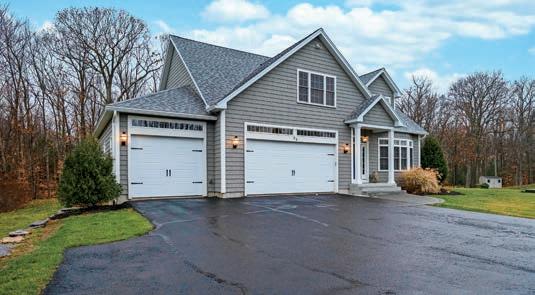
the roof. The sight of curling shingles is not pretty, but the larger issue in such instances is the potential for costly water damage when water gets in through the affected shingles.
Many home improvement experts insist they can determine when a home was built or most recently renovated simply by looking at the front door.
Steel and glass doors are
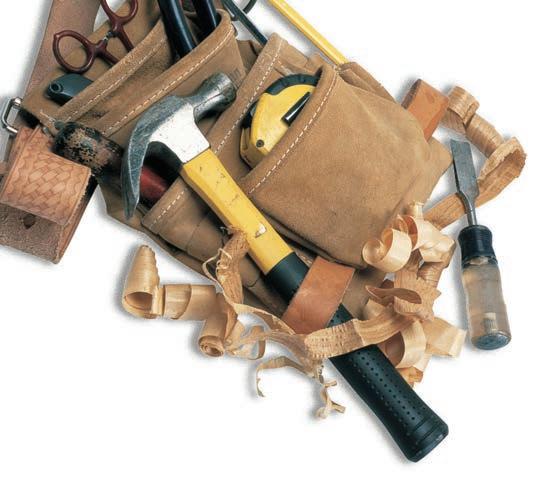
popular in modern homes, so homeowners with front doors with ornate designs and oval glass inserts can likely benefit from an upgrade to their entryway.
A modern front door can make a statement and real estate experts note how popular updated front doors are among buyers.
It’s not only the physical components of the home that may suggest an update
is necessary. Homeowners without a green thumb may have exterior landscaping that has seen better days. If a spring or summer day spent tending to your landscaping is not your ideal weekend pastime, then consider replacing unsightly landscaping with low-maintenance plants or hardscaping. These alternatives to more needy plants can create curb appeal without requiring any extra work for homeowners.
If the driveway looks like a busy road at the end of snow plowing season, chances are that’s adversely affecting the impression people have of your home.
In addition, cracked walkways indicate a need for renovations, as these areas are front and center when welcoming guests.




Private backyards are now go-to spaces for recreation and entertainment and great places to recharge the body and mind.
One ripple effect of the COVID-19 pandemic was more time spent outdoors, even if it was predominantly on one’s own property.
A survey conducted for the International Casual Furnishings Association found that people now spend more time relaxing, gardening, exercising, dining and entertaining outside than in years past. Though COVID-19 may no longer dominate headlines, the desire to enjoy outdoor spaces has not waned.
While enjoying outdoor living areas, homeowners can do all they can to make these spaces comfortable and welcoming. The following are some good starting points.
No matter how friendly homeowners are with their neighbors, there comes a time when privacy is paramount. Fencing, whether it is wood or vinyl, or even a natural fence made from closely planted hedges, can ensure residents feel comfortable venturing outdoors to swim, take a cat nap or even star gaze in private.
Homeowners should note the direction their backyard faces and the typical daily conditions of the space. For example, a yard that faces southwest may get plenty of strong sun during the day, requiring the addition of shade trees, covered patios or arbors to cut down on the glare and heat. If the yard is often hit by winds, trees or bushes planted strategically as windbreaks can help.
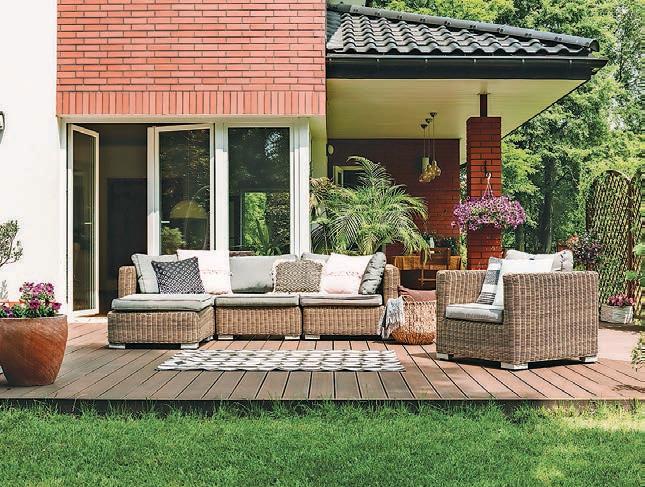
High-quality comfortable seating increases the likelihood that homeowners will want to stay awhile in their outdoor spaces. A deep-seating set complete with plush chairs, outdoor sofa or loveseat and chaise lounge chairs gives people more opportunity to sit and stay awhile.
A pool can be the perfect gathering spot on a warm day, while a spa/hot tub can bridge the gap to cooler weather. Soaking in hot tubs can relax tired muscles after a long day, loosen up stiff joints, improve cardiovascular health and
reduce the time it takes to fall asleep.
Homeowners may want to consider using a professional exterminator to get rid of ticks, mosquitoes and other nuisance insects from outdoor spaces.
Outdoor spaces can be enjoyed no matter the hour when there is ample lighting. Outdoor lighting not only sheds light on entertaining spaces, but also makes spaces safer and more secure.
As people spend more time enjoying their properties, they can consider the many ways to make outdoor living spaces more comfortable.
Home improvement trends come and go, and one trend that has become wildly popular in recent years is recognizable in yards every night. Landscape lighting has altered how people see and enjoy their properties at night, making it one of the more sought-after upgrades among modern homeowners.
Curb appeal is often seen through the lens of how homes appear during daylight hours, but landscape lighting can make homes look better and more modern, and potentially safer, after the sun goes
down. With such potential, landscape lighting is worth exploring for homeowners looking to upgrade their properties.
When considering landscape lighting, homeowners should know that there are various options to consider.
Spotlights project a concentrated and narrow beam of light that’s usually around 45 degrees. Spotlights are often chosen to highlight specific features on a property, like a component of the landscaping.
Individuals who want to cast light over wider, more general areas may consider floodlights, which spread light
up to 120 degrees.
Inground lighting is among the more sophisticated landscape lighting options. This lighting illuminates the whole of a tree or structure, often creating a dramatic look. These circle-shaped lights also are great at illuminating walkways and driveways.
Post lights are another outdoor lighting option, and these are often used to light up long walkways and pathways so it’s easier and safer to navigate dark areas at night.
Many homeowners consider a do-it-yourself approach when pondering a potential home renovation, and a landscape lighting project is likely to
inspire such curiosity as well. The home experts at HGTV note that the feasibility of DIY in regard to a landscape lighting project depends on the type of lighting homeowners want to install and where they want to install it. Replacing an existing electrical fixture may be well within the skill of a seasoned DIYer, but installing a new fixture is a job best left to the professionals.
Homeowners whose homes currently have no or very little landscape lighting are almost certainly better off working with a professional.
Solar lighting that does
LIGHTING: Page 32
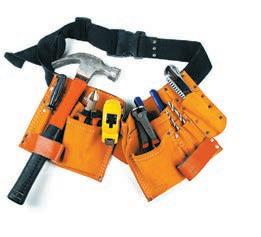

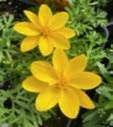
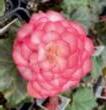
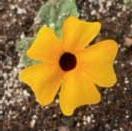
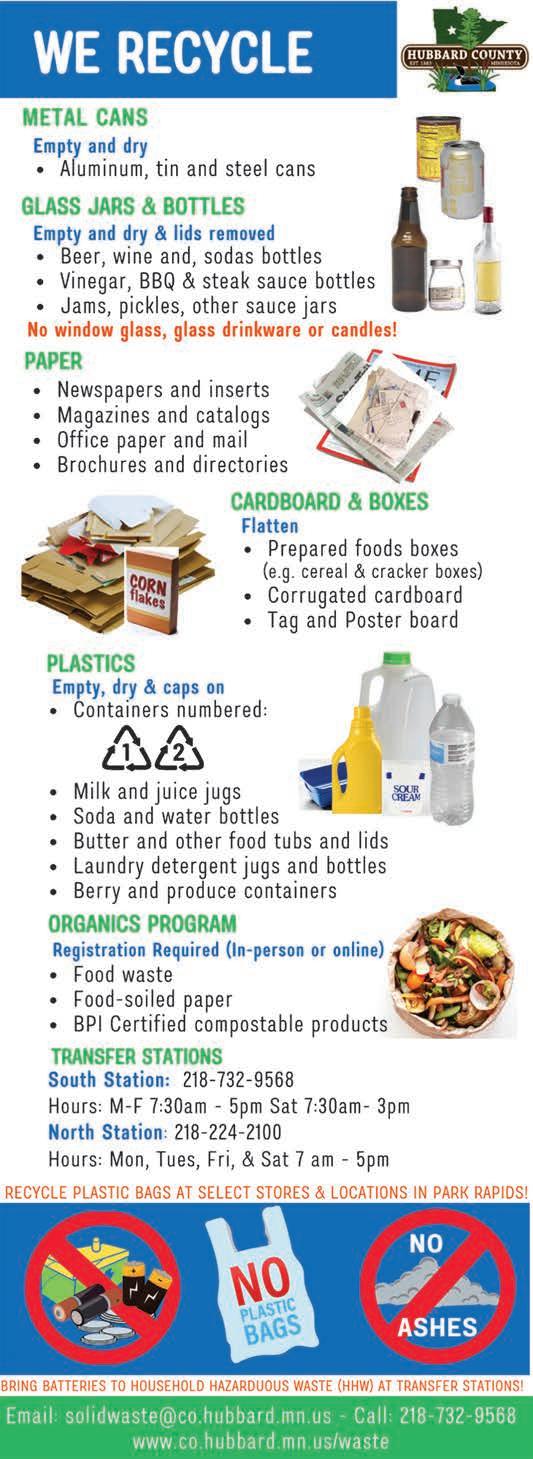
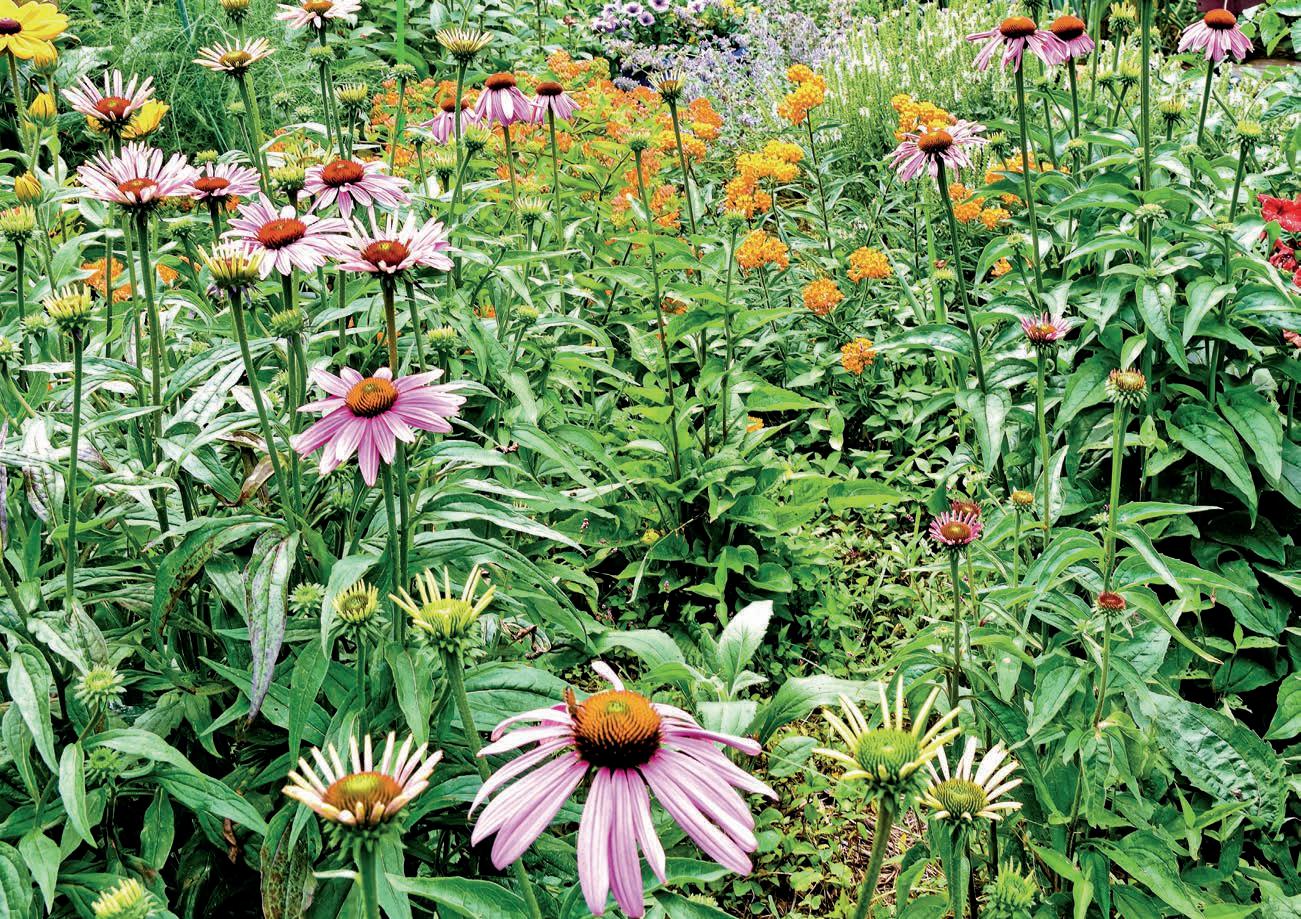
Julie Weisenhorn says this is a good time to slow down and take stock of how choices made in our yards and gardens can have an impact on the environment in Minnesota and beyond.
Q: Can we really make a difference for the environment through our yards and gardens?
Absolutely. For example, you can conserve water by watering your lawn infrequently and deeply instead of sprinkling your lawn often. Deep and
infrequent watering saturates soil and makes grass roots grow deeply, seeking that water and creating a healthy and resilient lawn.
Plant diverse masses of pollinatorfriendly flowers, making sure something is blooming in your garden from April through October. Spring bulbs, summer perennials and annuals and fall-blooming native flowers provide valuable and nutritious nectar and pollen for bees of all kinds who are in our landscapes early spring through late fall.
Q:Tell us more about why plant diversity matters.
There are all kinds of interactions between plants and animals, including insects. A monoculture of a particular plant only supports a small population with shelter and food. Certain plants have evolved with insects to support each other. For example, short-tongued bees forage on small flowers and pollinate the plant, and long-tongued bees feed on large flowers, pollinating as they forage. Monocultures of plants
LANDSCAPES: Page 28



•
•
•
•
•
•
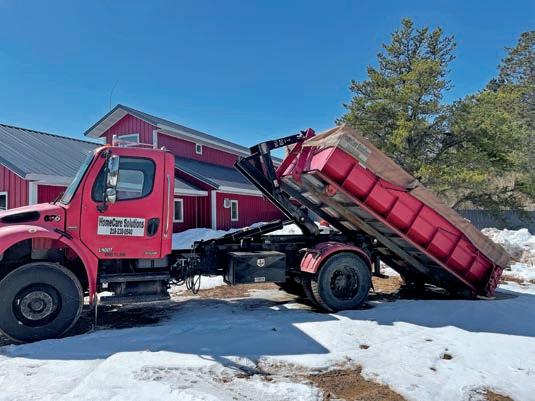
•



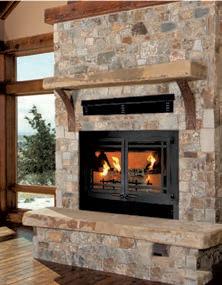

From Page 26
can intensify disease. Think of the majestic American elms that lined our city streets. Dutch elm disease (DED) moved from one tree to the next. Now we’re seeing the same with ash trees and emerald ash borer. So we stopped planting elms and now plant DEDresistant cultivars. Planting tomatoes every year in the same garden bed will perpetuate soil-borne diseases on tomatoes. The solution is to plant other plants in that soil – called “rotation” – that are not related to tomatoes and thus don’t keep perpetuating the diseases.
Q: How important is it for a gardener to understand their soil?
Think of soil as the foundation of every yard and garden. It’s important to have a good foundation because the soil will affect everything you do in your landscape now and into the
future. Unless soil is toxic, we never recommend removing and replacing existing soil, but learning about it through a soil test and then amending it accordingly. Understanding your soil, along with the light and space you have to plant, is important when it comes to choosing plants that will thrive and not just survive.
Q: We can’t talk about yards and gardens without mentioning plant selection, right?
One of my favorite topics! There are so many great plants for Minnesota yards and gardens. As I mentioned, understand the kind of growing conditions you have available to you – soil, space size, amount of light – and then look for plants with growing requirements that match the site conditions. The “Plant Elements of Design” plant selection tool and video series is a good place to start, and will help us learn to consider the plant features we want and the site
conditions we have before buying plants that may not be suitable. You can find it on our website, www.extension.umn. edu.
Q: What about people who don’t have a yard?
The good news is you don’t have to have a yard to have a garden. Patio, deck and balcony gardens can be a haven for us. Containers of all shapes, sizes and forms can be filled with diverse plants that feed us, protect us, smell great and attract and benefit bees, butterflies and even birds. And then there are houseplants! They can be moved outside in summer and then back indoors to bring the outside in during winter. There are basics to keeping pests from pestering your houseplants (and you) and ways to add supplemental lighting if your home lacks enough light.
The University of Minnesota Extension horticulture team regularly publishes “Yard and Garden News” for free. You can also learn more at extension.umn.edu/yard-and-garden.
Do you still have an avocado green kitchen?
Is your living room dank and dark?
Perhaps there is only one bathroom for a family of six?
Answering “yes” to any of these questions could serve as the catalyst for a home renovation project.
Home improvement projects come in all shapes and sizes – some with huge budgets and others that are more cost-conscious. Regardless of what homeowners hope to achieve with their renovations, a common goal across any price point is a desire to save as much money as possible.
Home renovations can be expensive, but there are ways to cut costs.
“Remodeling” magazine annually publishes a cost

vs. value report that lists the average cost and return on investment (ROI) homeowners can expect of various types of projects. If you’re planning to sell your home soon, it may be best to focus on repairs and renovations that will generate the most substantial ROI.
Even avid do-it-yourselfers can sometimes benefit from a contractor’s expertise, particularly for complex tasks. Don’t waste money by trying tough jobs yourself. Rely on an experienced contractor who can get supplies for less money and will do the job right the first time. Compare bids from several different contractors and figure out the best value.
Rather than a complete gut and rebuild, figure out


where you can revitalize existing fixtures and more. For example, refinishing existing cabinets can save you up to 50 percent compared with the cost of new cabinetry, according to Angi (formerly Angie’s List), a cost comparison and business review resource.
Certain materials may be all the rage but they come with a higher price tag. Granite counters could be $60 to $100 per square foot; however, a composite or laminate that looks like granite and wears well may be $10 to 40 per square foot. Figure out where you can choose middle-of-the-road materials for maximum value.
You’ll pay more to install a deck or a pool right before the outdoor entertaining season.
There also may be a premium to get work done right before a major holiday. Therefore, consult the calendar to find an off time for a renovation and book it then to save.
You might be able to save by doing some of the demolition and preparatory work yourself. For example, you can tear up old carpeting before the installation of new tile floors. Perhaps you can mend and patch up walls before a paint job.
Former showroom kitchens and baths often are sourced at a fraction of their recommended retail prices. Retailers often update their displays and you may score existing showroom items at a discount.
Renovations can be expensive, but there are many different ways to cut costs.






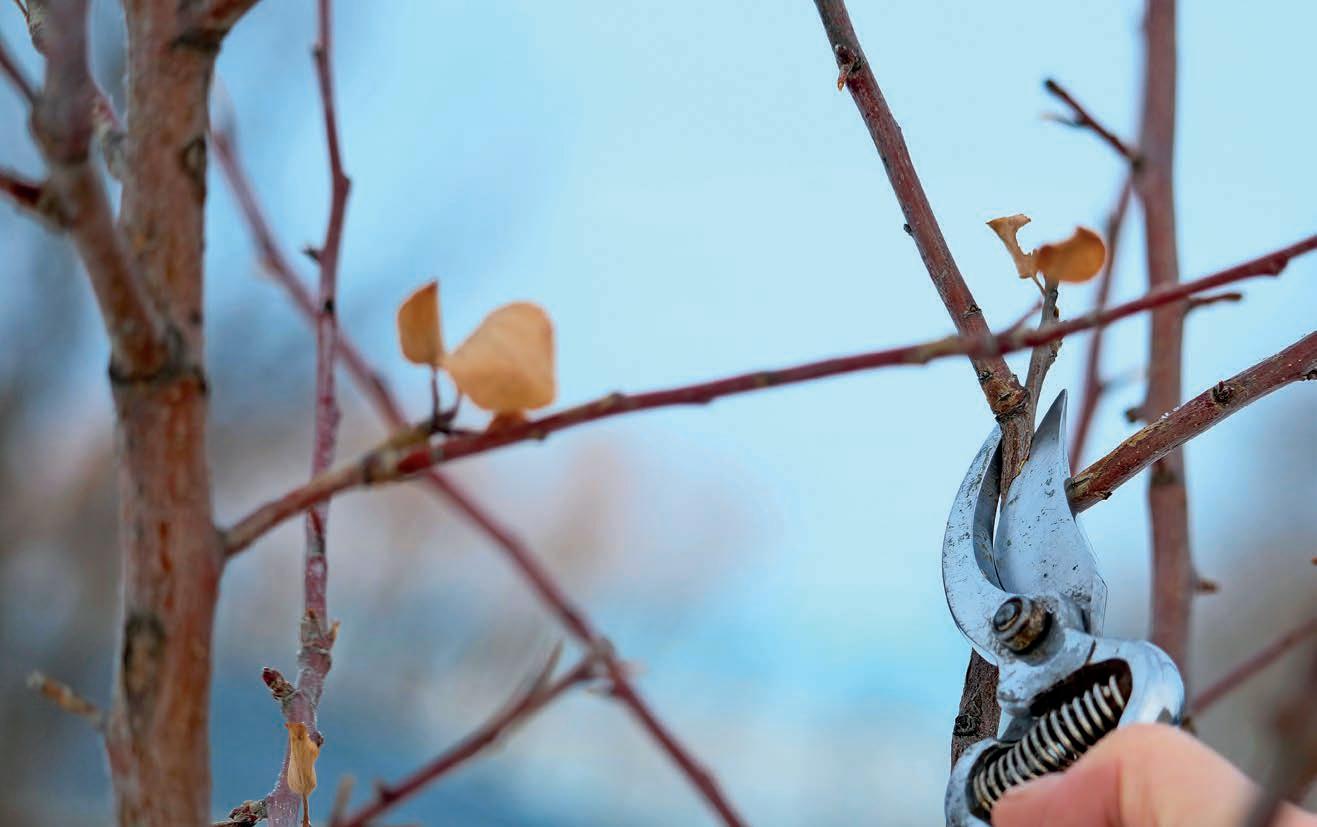

Most apple tree owners know our fruit trees should be pruned. But when we’re standing in front of the tree with pruning shears in hand, knowing how to begin the surgery can feel intimidating.
Apple tree pruning isn’t as complicated as it might seem once we understand what twigs and branches to remove. We’re now entering the prime pruning window of opportunity, after the coldest winter weather is likely past and before spring warmth
When pruning side branches for the main trunk, cut just beyond the branch “collar” without leaving a stub.
causes growth to begin.
Pruning while apple trees are dormant is the traditional time, from about midMarch through mid-April, depending on the year. You can easily see branch structures while trees are bare, and trees won’t waste energy producing new growth that ends up being pruned away.

Fireblight disease bacteria are inactive now, so spreading the bacteria during the pruning process is less likely during the
dormant season. However, there is an alternate time for apple tree pruning to better reduce the chance of another major disease, which I’ll address later in the column.
A primary reason for pruning fruit trees is to let more sunlight and
air inside the tree. The sunlight prompts more flowers to form lower on the tree, yielding more fruit within easy reach. Getting more sunlight and wind in the canopy decreases interior humidity and lessens disease.
KINZLER: Page 31
From Page 30
Pruning also controls tree size. If left to their own devices, apple trees can become large, with the best fruits high on the outer perimeter where better sunlight encourages flowering and fruiting high on the tree.
Pruning levels out yearly fruit crops, reducing the tendency of some apple types to have boom-orbust apple harvest cycles, where trees bear heavily one year, followed by no apples the next.
To begin pruning, several types of tools are needed. Handheld, shears-type pruners are meant to cut branches about pencilsized diameter. Longhandled loppers are for branches about one-inch in diameter. For larger branches, a pruning saw is needed.
To decide where to begin, imagine the ideal, wellpruned, well-bearing apple tree. The shape favored by research is a pyramidal Christmas tree shape, with the lowest branches being the widest.
Pruned to this shape, all branches receive greater sunshine, which encourages more flowers and fruit lower on the tree. The shape is called a “central leader system” in which a single central trunk runs the height of
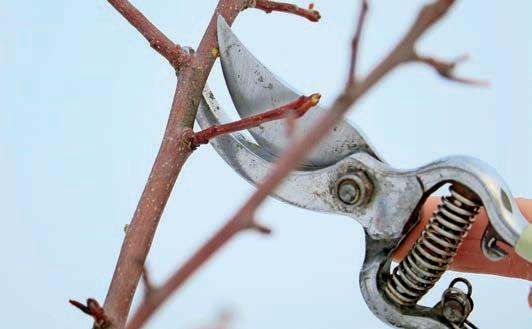
the tree, with strong side branches, called “scaffold” branches, radiating outward.
On young trees, planted within the past few years, if there’s more than one central leader, remove one to eliminate “V” branching at the top of the tree. Prune into a pyramidal shape with the lowest branches being widest, and shorten progressively as you move up. Always cut to a side bud or branch, never leaving empty stubs.
If an apple tree is a little older, around five to 10 years old and is currently a round globe, prune it into the pyramid shape described earlier. Start with the lowest branches, making them the widest, and moving up the tree in stair-step fashion until the top is the narrowest point.
Branches along the
central trunk are often too close together on trees of this age. The main horizontal scaffold branches should be spaced 12 to 24 inches apart along the trunk. Remove excess branches back to the trunk, pruning just outside the raised “collar” where the branch arises from the trunk.
If your apple tree has never been pruned, reshape it gradually over several years, especially if your apple tree is overgrown and fruit is high out of reach. Remove about one-fourth of the tree’s height each year for four years, attempting to get the tree down to about 12 feet high. Prune branches back to side growth, never leaving stubs.
After shaping the tree and establishing a network of scaffold branches, prune out crisscrossing branches
and branches pointing backward into the tree. Branches should radiate outward. Remove upwardpointing shoots, called watersprouts, from main branches. Remove sucker growth from the tree’s base, and any dead wood.
I previously indicated the dormant season to be the traditional apple pruning time. However, Jim Walla, retired NDSU plant pathologist, now with Northern Tree Specialties, is a leading fruit tree authority, and he favors delaying pruning until apple trees begin active growth.
As Walla indicates, the risk of black rot canker fungus, which is by far the most damaging disease of apples in our area, is reduced by delaying pruning until trees have begun growth. Because the tree’s cell growth has become active at that point, pruning cuts will seal more rapidly, leaving less tissue open to invasion by the black rot fungus.
Walla’s observations about delayed pruning are well worth noting, as black rot canker disease kills many area apple trees every year.
Don Kinzler, a lifelong gardener, is the horticulturist with North Dakota State University Extension for Cass County. Readers can reach him at donald. kinzler@ndsu.edu.
There’s no place like home, especially when that home is a comfortable and safe haven.
One of the ways residents find comfort in their homes is by maintaining the right indoor temperatures, which fluctuate along with the seasons.
While there is much to be said about opening windows and doors to let Mother Nature do her thing, indoor comfort is often maintained with a heating, ventilation and air conditioning (HVAC) system.
HVAC can include heat pumps, furnaces and airconditioning units. It is an automated system that works by adjusting a thermostat to regulate air temperature, and sometimes humidity, in the home.
As with any mechanical device, an HVAC system has a life span that must be considered. Should any of the following conditions be present, it is likely time to consult with an HVAC technician to see if repairs or replacement of the entire system is warranted.
1. Age
If the HVAC system is more than 10 years old, it could be time to begin budgeting for a new unit. Many modern, efficient systems may last 12 to 14 years with routine maintenance. But it’s good to keep an HVAC system’s age in mind so you can readily recognize when it might start to fail.
From Page 24

An efficient, properly working system will quickly heat or cool the home and then turn off. A system that is turning on repeatedly or having to run for awhile before the set temperature is reached could be nearing the end of its utility.
3. Strange noises
Groaning, banging or loud humming noises should be addressed. While these noises may indicate that certain components need maintenance or replacement,
not require any electrical work can be installed quickly and easily by anyone, but such options may not provide the look homeowners are aiming for.
The amount of lighting homeowners want to install is up to them. If
they also could be symptoms of age and a system nearing failure.
4. Frequent repair visits
Knowing the HVAC company’s repair person by name is a sign that the system has required too much work in recent months. Repeated issues and repairs are probably signs that it’s time to consider a system replacement.
5. Higher bills
Sticker shock when receiving electricity or gas bills likely mean the
the home currently has little or no landscape lighting, a consultation with a professional can help to determine how much lighting to install and where to install it.
When discussing landscape lighting, homeowners may want to inquire about dimmers. Dimmers can increase or decrease lighting depending on the situation. For example, homeowners may want a little extra light during a party,
HVAC system isn’t working efficiently and might need to be replaced.
6. Poor indoor air quality
If the home is dusty or humid or even if allergies seem to have cropped up out of nowhere, this could indicate a poorly functioning HVAC system. HVAC systems are vital to keeping indoor environments comfortable and safe. Such systems may exhibit certain signs that indicate they need to be replaced.
but less when relaxing alone outside at night. Dimmers allow homeowners to adjust as necessary.
Landscape lighting is a popular home renovation trend. Homeowners considering adding landscape lighting to their property are urged to work with a skilled professional to devise and install a set-up that makes their homes more appealing at night.





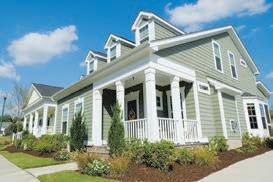






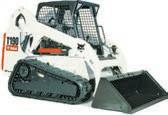
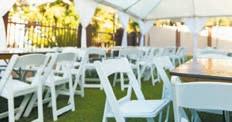




University of Minnesota
Q: What should a home gardener know about soil health?
One of the most empowering things to know is that no matter how large or small your garden is, you are able to do good things for your soil.
Your soil is alive, full of amazing microbes like bacteria and fungi, bugs, worms, spiders and so much more. All of these organisms interact with each other and with plants to create a soil ecosystem. The more diversity we have in the soil ecosystem, the more it’s able to fend off “bad” bugs and plant diseases. In this way, gardeners are almost like farmers, feeding and tending the soil “livestock.”
And the best part is that caring for
your soil not only helps you to grow healthy plants, but can save you money and also protect the environment. A healthy soil can retain, recycle, and provide nutrients, allowing you to reduce your fertilizer use and, in turn, help prevent excess fertilizers and nutrients from getting into our water. The trick is to test your soil on a regular basis so you know which nutrients your soil can supply to plants, and which you may need to supplement with fertilizers.
Q: What is soil testing? Who should get their soil tested?
Soil testing, in a general sense, is the process of collecting a representative sample of your soil and sending it to a laboratory that will analyze the characteristics most important for
plant growth. The laboratory will then make recommendations for fertilizers and/or lime (to adjust pH) that are uniquely suited to the soil you have and the plants you want to grow. Soil tests can also look for contaminants, such as lead, that may impact human health.
Every gardener should get a soil test! If you haven’t had one yet, now is a great time to get one. Repeat your soil test every three years or so; you may want to test more or less often depending upon how intense your production is and/or how quickly conditions change in your soil. The University of Minnesota Soil Testing Lab is a great option for a soil test, but there are several other labs in
SOIL: Page 35
From Page 34
Minnesota that offer soil testing, too.
One of the most important aspects of a soil test is collecting a good sample. First, define the area you want to represent with a sample, ideally one that’s relatively uniform in soil type and growing conditions. Then, dig a hole to a depth of about six inches and use a spade or trowel to collect a vertical “slice” of soil from the side of the hole. Do your best to remove surface debris, like leaves or grass, from the “slice”, and put the “slice” in a bucket. Repeat this in five to 10 randomly selected places around your garden or lawn. Thoroughly mix all of the “slices” together and remove about two cups of soil from the bucket. That’s the “sample” you’ll send to the lab.
For more in-depth information about soil testing, including how to collect a sample, check out “Soil Testing on Fruit and Vegetable Farms” (https://extension.umn.edu/soil-andfoliar-testing/soil-testing-fruit-andvegetable-farms).
Also, there’s a neat U of M

Tillage breaks up the soil’s natural structure, exposes organic matter to decomposition, disturbs the soil organisms, and can make your soil more prone to erosion.
Extension video (https://www. youtube.com/watch?v=eO9LqPjNrwI) about why you should do a soil test.
Q:How can we improve the health of our soil?
There are several things we can do to improve soil health. The first is to feed your soil organisms by adding organic materials for them to “munch” on. Examples would be incorporating compost, using cover crops, or using organic (carbon-based) fertilizers. These organic materials, when decomposed by soil organisms, replenish soil nutrients that are removed by harvesting crops.
Another thing to do is to protect the soil from erosion. Rain and wind can transport soil particles away from our fields and gardens, taking with them
soil nutrients and organic matter. Not only does this impact our soil fertility, but it can also add to nutrient pollution in our waterways. Consider using some kind of mulch (straw or grass clippings) or living cover (such as cover crops between rows of peppers) to keep your soil in place.
It’s also a good idea to minimize the amount of disturbance to your soil. Try to avoid excessive tillage in the garden. For example, try tilling only where you’re planting, such as tilling in beds but not tilling walking areas between beds. Or consider trying hand tools, such as a spade or broadfork, to turn the soil without pulverizing it. You could even experiment with no-till gardening. Tillage breaks up the soil’s natural structure, exposes organic matter to decomposition, disturbs the soil organisms, and can make your soil more prone to erosion.
And finally, test your soil to be sure you’re not adding too much fertilizer or organic materials (yes, you can overdo the compost. Read more here at https://extension.umn.edu/yardand-garden-news/compost-and-soilorganic-matter-more-merrier).
SOIL: Page 36











The decision to replace windows often comes down to aesthetics and necessity.
Drafty windows can reduce energy efficiency in a home, requiring HVAC systems to work harder to keep interiors comfortable. The harder the HVAC must work, the more homeowners will pay in energy costs.
Old windows also may be points of entry for water and insects.
There are plenty of reasons to invest in new windows.
1. Vinyl or aluminum may be best. Lumber is farmed rather quickly today and solid wood products may not stand up to elements as well as wood used a halfcentury ago. To avoid rot, vinyl windows often are an affordable and durable choice. Homeowners also have the option of wood windows with aluminum cladding, which are longlasting.
2. Moisture problems indicate windows need to be replaced. Condensation that shows up as fogging between double-pane windows or on the inside of windows indicates that the windows are starting to fail.
From Page 35
Q:What should we know about fertilizer?

There
If installing a vapor barrier in the basement or crawl space, ventilating properly when showering or cooking, or using a dehumidifier indoors does not remedy the situation, it might be time to replace windows.
3. Windows add curb appeal. Beyond functionality, replacement windows immediately update the look of the home and can improve curb appeal since they are one of the most prominent features on the exterior of a home. If a house needs an update, replacing windows can be a quick and affordable update.
4. Consider other energy-efficient upgrades. Sometimes older windows can be salvaged, especially if they are not damaged and only moderately drafty. Replacing panes, sash cords, weather stripping, and even glazing may be less expensive than replacing a window. Plus, older homes with attractive windows complement one another. To keep energy bills down, think about adding insulation to the attic and basement, which is a good idea even if you are replacing windows.
5. The wrong windows can
don’t want to apply too much because it can harm your plants and the environment.
I like to focus on helping people understand that while soil supplies lots of nutrients for plants, not all plants are able to get all of the nutrients they need from the soil alone. Some nutrients, particularly those that plants need the most of (nitrogen, phosphorus, and potassium), may need to be supplemented with fertilizers. That’s why a soil test is so important; you want to give your plants what they need to be their “best selves”, but you
A quick primer I wrote about fertilizing in the home vegetable garden can be found at https:// extension.umn.edu/manage-soilnutrients/quick-guide-fertilizingplants. It talks about the nutrients that plants need, the nutrients that soil has, differences between organic and inorganic fertilizers, and much more.
Another thing to know about fertilizer is that finding the right one can feel overwhelming. Even when you get a soil test, the recommendations on the test may not match the fertilizers that you find at the garden store.
A general rule of thumb is to match the nitrogen recommendation as
adversely affect home value. The National Association of Realtors says homeowners get about 73 percent of their replacement window investment back when they resell a home. But choosing the wrong windows might lower the value of the home. It’s important to match the look of the original windows, including window material and the divided light pattern (the number of panes in each window) with the original windows.
6. Think about soundproofing, too. When upgrading windows, also think about how certain windows can cancel out noises and make homes more soundproof. Some windows can help reduce outdoor distractions like leaf blowers or lawn mowers.
7. Proper installation is key to longevity. Replacement windows are only as good as their installation in many cases. Poor installation and orders of standard rather than custom sized windows could result in poor fitting and seals. Homeowners should carefully vet and review window replacement contractors to find the best professionals for the job.
closely as possible, but do your best to not add any more phosphorus than is needed in order to protect water quality.
Potassium is more forgiving; it’s OK to be a little over or under with potassium. Note that the fertilizer bag or box will list the nitrogen (N), phosphorus (P), and potassium (K) content in that order (N-P-K).
Dr. Anne Sawyer is an assistant Extension professor at the University of Minnesota. Anne earned her doctorate in soil science from the U of M in 2017, where she studied nutrient management and microbiology in perennial grasses grown for bioenergy. Her previous work experience includes Extension (horticulture), the National Weather Service (snow hydrology) and the National Park Service (resource interpretation).








